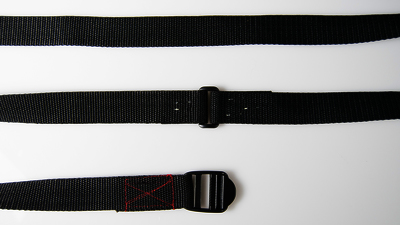SWANN, David (2016). LIFEBELT. [Artefact] [Artefact]
Documents
12378:39076
12378:39077
Abstract
The EU/ Turkey agreement was a game changer. The mental well-being of irregular migrants is now in jeopardy. Post-traumatic stress, anxiety and overwhelming sense of hopeless amplified by detention and uncertainty, are all presentable signs in those who are most at risk of suicide. These signs were evident in the irregular migrants we met on the island of Kos- 12hrs after the agreement came into force. Aware of their impending imprisonment and deportation, 30 distressed men fell to their knees, removed their belts and shoelaces, looped them into a ligature and placed the belt around their necks. They collectively cried ‘we are human’.
This first-hand experience was a catalyst for action. Gunnel (2004) systematic review of suicide by hanging outlines the principle design challenges: only 2kg of pressure is needed to block the jugular vein, 70% of attempts are successful, the belt is the preferred tool for suicide(50%).
Distributing non-food items such as donated clothing, trousers and footwear is an essential job of volunteers & agencies. Belts are distributed too- as accurate trouser fitment in the field is difficult. The WHO (2014) states an important component of suicide prevention is restricting the means to do so. LifeBelt addresses this emergent and neglected problem. Our patented, two-piece belt incorporates a smart D-loop plastic buckle that is discretely engineered to shear at 0.75kg to prevent its use as an improvised ligature. This inventive 0.50 EUR belt product has the capability of rapid implementation at a mass scale to ensure each life is able to fulfil its true potential.
More Information
Statistics
Downloads
Downloads per month over past year
Share
Actions (login required)
 |
View Item |


 Tools
Tools Tools
Tools![[thumbnail of Prototype]](https://shura.shu.ac.uk/12378/1.hassmallThumbnailVersion/film20.jpg)

![[thumbnail of Smart D-Loop Buckle]](https://shura.shu.ac.uk/12378/2.hassmallThumbnailVersion/Slide4.jpg)

